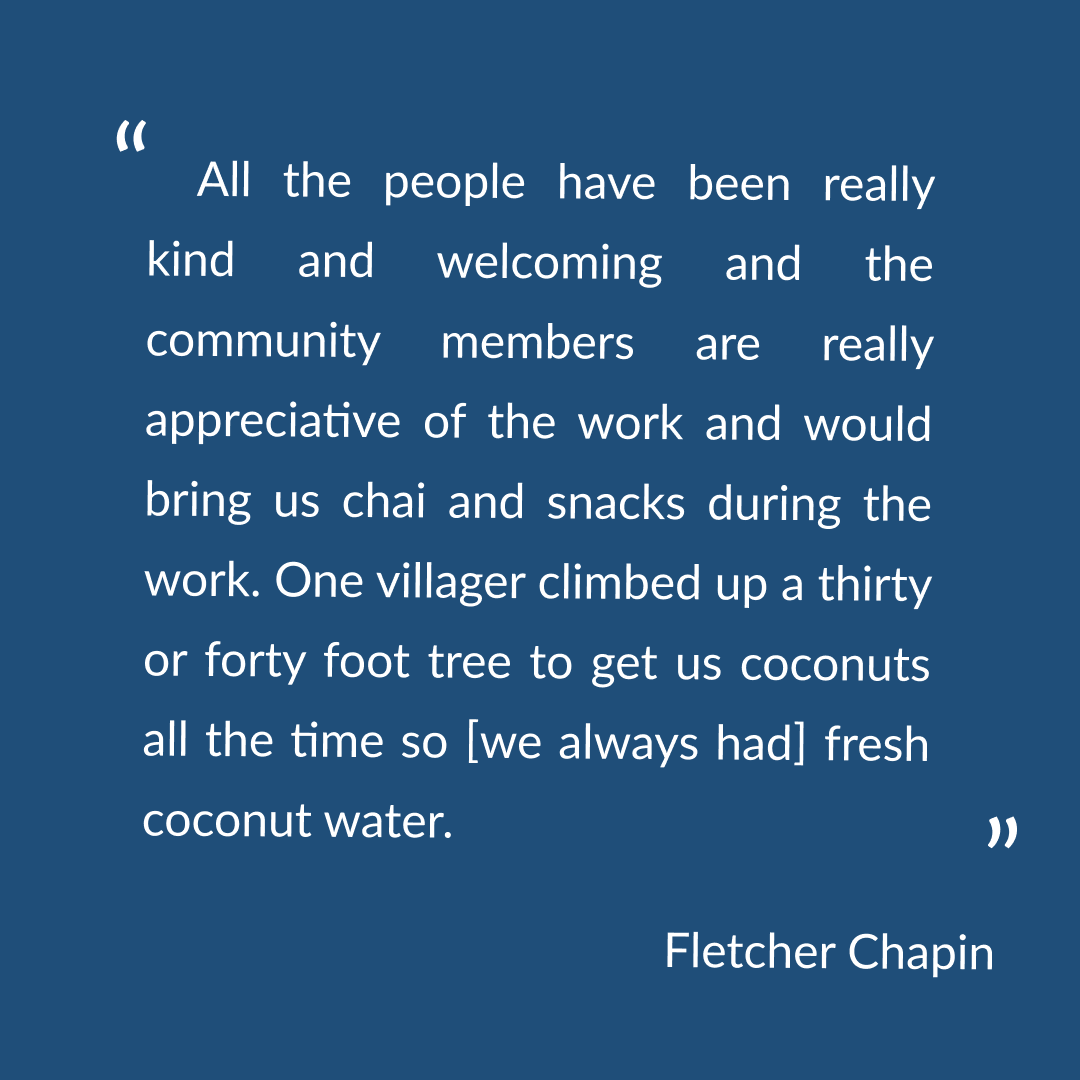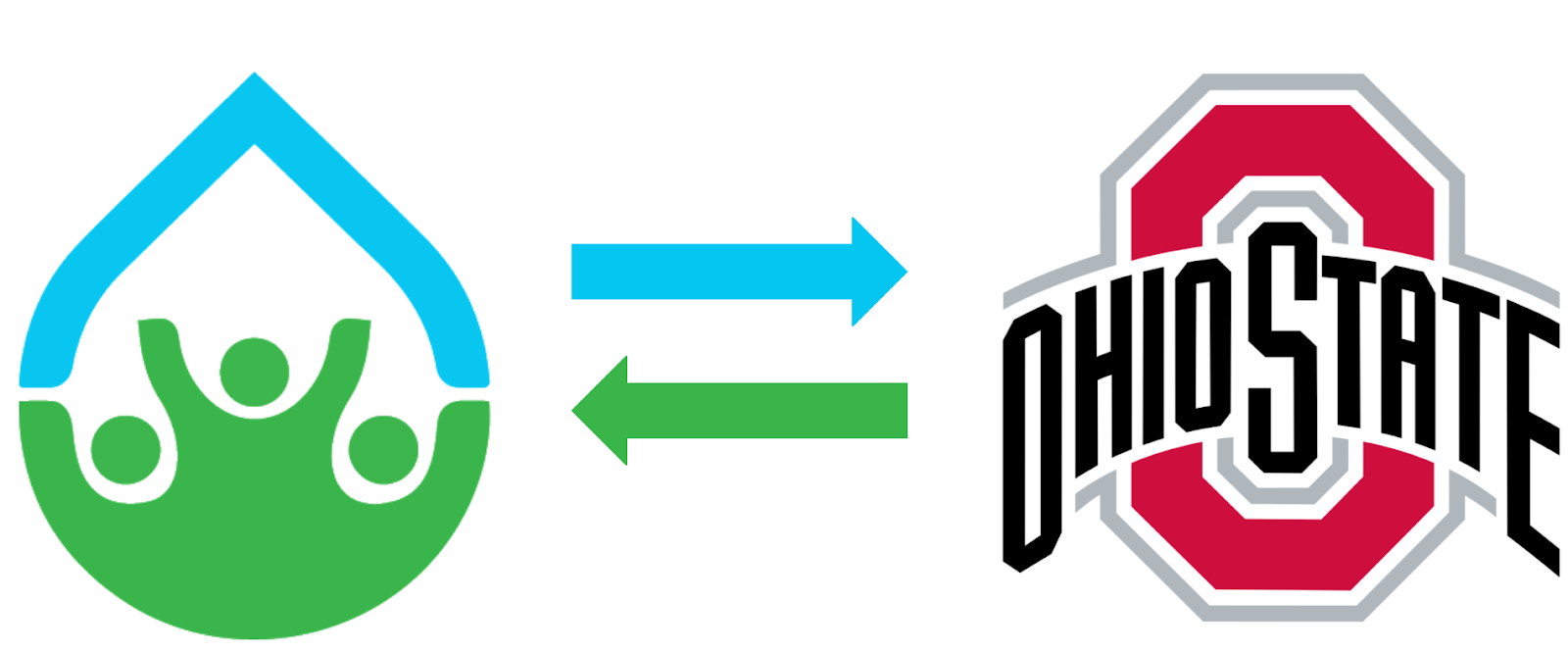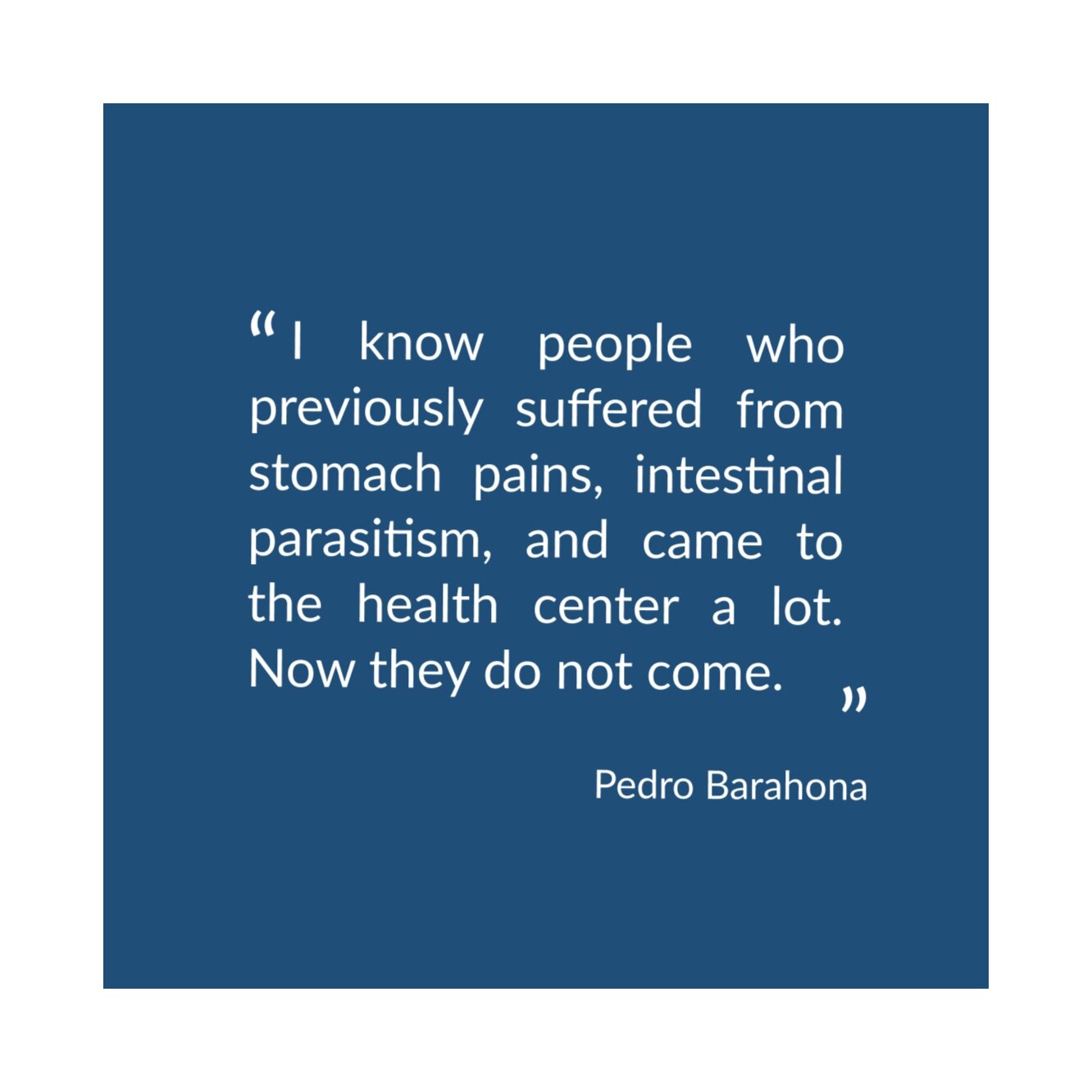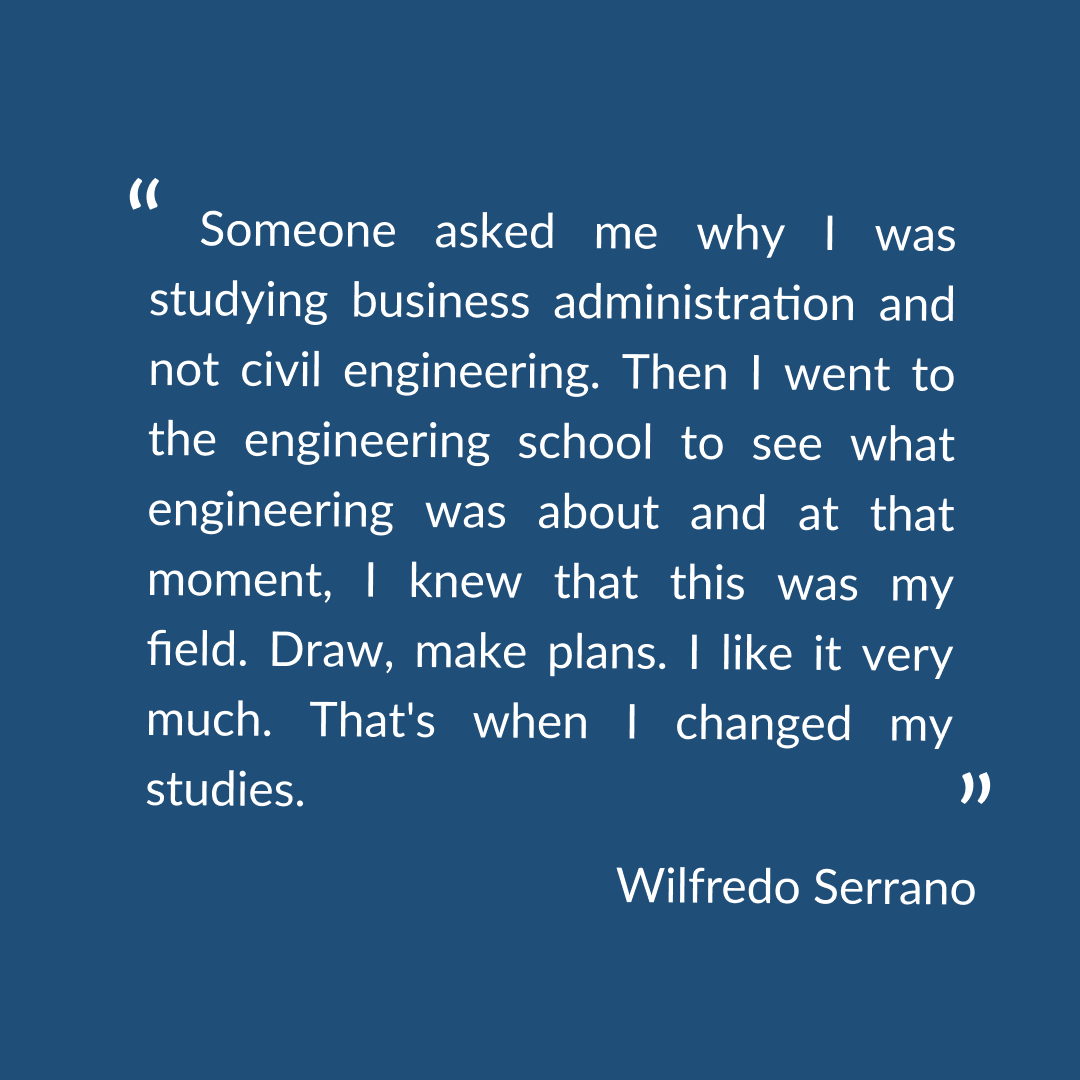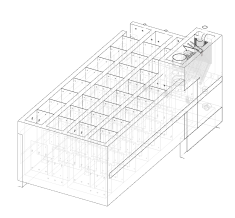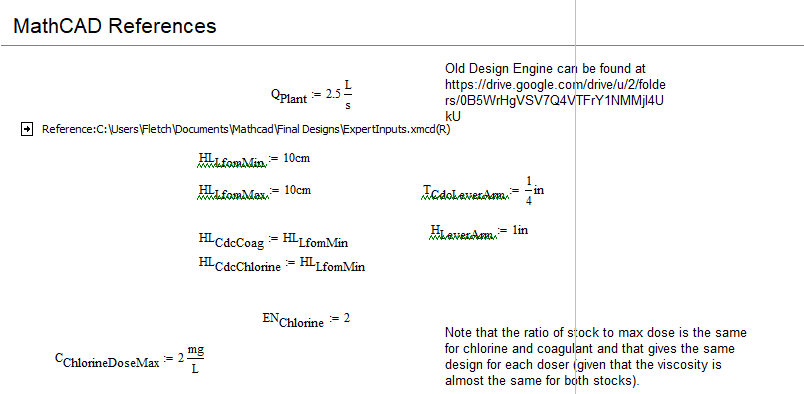Fletcher Chapin is the Project Manager for the AguaClara Reach India Program. Last year, Fletcher spent a month in the Patimul village in Odisha, India, providing technical support for the installation of a Hydrodoser, which is a device that disinfects water and reduces waterborne illnesses in the community.
Gram Vikas (GV) and AguaClara Reach (ACR) members in Patimul with the installed Hydrodoser (January 2020). From left to right: Sudanshu (GV Supervisor), Fletcher (ACR), Debashish (GV Engineer), Apriya (GV Technician), and John (GV Driver).
The Hydrodoser technology developed by AguaClara Cornell and AguaClara Reach automatically doses well water with an appropriate amount of chlorine. The chlorine kills pathogens that could otherwise cause life-threatening waterborne diseases.
Part of the hydrodoser system that was installed in Patimul.
Location of Patimul hydrodoser installation.
Read the full interview with Fletcher below, which was conducted by Gram Vikas, an India-based community partner of AguaClara Reach. The original English interview is first, with a Spanish translation following. A translation in Odia will also be posted once complete.
English:
Please introduce yourself.
I’m Fletcher Chapin and I work as the India Program project manager for AguaClara Reach. AguaClara Reach is a U.S. based NGO which works to train partner organizations such as Gram Vikas on our water treatment technology. Here in Odisha we’re working to implement something called the “Hydrodoser” which is a water chlorination technology that is ideal for scenarios where there’s low turbidity in the water but some pathogens or bacterial contaminants that need to be treated.
About a year and a half ago I graduated from college and my first job after college was working for Microsoft as a software engineer. I didn’t enjoy that work as much and I didn’t find it very fulfilling, so a few months ago I decided to leave Microsoft and I applied to work with AguaClara Reach; AguaClara Reach had this position set up specifically for India so I chose to do this instead of software engineering because it seemed like an exciting challenge.
Can you tell us something about the significance of the Hydrodoser as an innovation?
So the reason the Hydrodoser is really cool is that it’s all electricity-free, so it’s just basically working on gravity. What that means is that if they have a gravity-fed water source, they don’t have to spend money on electricity for the system. What’s difficult in most systems, the challenge that the Hydrodoser is trying to tackle, is adjusting the chlorine dose as the plant flow rate changes. So if there’s a lot of rain and then there’s an increase of water into the plant, the Hydrodoser will adjust the dose automatically to increase it to accommodate for the increased water flow into the plant. And so the operators won’t have to manually adjust the dose themselves.
Why do you think this design solution started?
The goal from AguaClara Reach’s perspective is always to empower the communities and to have them use locally-sourced parts as much as are available. Most conventional water treatment technology uses a lot of metal, a lot of metal parts, and electrical equipment and our goal is to take all of that away so that the villagers can maintain the system themselves. If something breaks it’s all just PVC pipes so they can replace the parts themselves that way we can really try to empower them to have ownership of the water treatment plant.
What has your experience been like so far?
It’s been a really exciting experience. There have been some challenges and some really good parts. All the people have been really kind and welcoming and the community members are really appreciative of the work and would bring us chai and snacks and stuff during the work, which was very nice of them. One villager climbed up a thirty or forty foot tree to get us coconuts all the time so we could have fresh coconut water. So the villagers were very, very nice. And it’s really good and fulfilling to see your work be appreciated and for the excitement that all the villagers had. Like at the inauguration, they were all singing and dancing and that’s very good to see because even if we implement and build the technology, without the support of the community to maintain and operate it, it doesn’t really matter how well the technology functions. It’s really important to have the support of the community.
And then I guess, the challenge is that it’s definitely isolating for me. Being from the United States, only speaking English, and having spent a month out in rural Odisha where people don’t usually speak any English, it can be challenging to feel isolated from all of my friends and family at home. And lonely. But the work made it worthwhile I think.
Are you seeing an impact? Now that the Hydrodoser has come to the two villages, did you get to speak with the villagers about it?
So I didn’t get to talk with them very much. I know one thing they said is that they’re still not used to the taste of the chlorinated water because before they had untreated water and now it tastes a bit like chemicals. So they didn’t like that their rice tasted like chlorine. But I think they should get used to it. In terms of long term impacts, though, I don’t think I could tell yet. But they were definitely very happy and proud to have the system installed.
How do partnerships become important in reaching the underserved?
I think with serving underserved communities it’s such a big challenge that you need help from a lot of different people with expertise in different areas. And so in this example, AguaClara Reach, we understand the technology really well, but like I was saying, you need the community support to operate and maintain the technology. Coming in as foreigners from the United States, it would basically be impossible for us to just develop community support ourselves so we need a partnership with someone like Gram Vikas, who’s a local group that is more in tune with the communities and can go and reach out more directly and get support there. The community’s role in the partnership is very important as well because they’re the ones at the end of the day who do a lot of the work and will pay to operate the plant and maintain it. So you definitely need the work from all three groups together to reach the goal that we want.
How was the experience working in Odisha?
I’ve enjoyed it so far. Like I said, everyone has been very welcoming and the food is very good so I like that. I like Indian food, so that’s a good thing. If that wasn’t true it would have been a lot worse. But it’s a very different experience than working at Microsoft, and working in an office all day which is more comfortable but more monotonous. Working in the field is exhausting but it’s really exciting. I said to a friend back home that I think in one day in the field I would have more excitement and fulfillment in my work than a month at my old job.
Español:
Por favor, preséntase.
Soy Fletcher Chapin y trabajo como director de proyectos en el programa de India para AguaClara Reach. AguaClara Reach es una ONG basada en los E.E.U.U. que trabaja para entrenar organizaciones asociadas, como Gram Vikas, en la tecnología de tratamiento del agua. Aquí en Odisha trabajamos para implementar algo que se llama el “Hydrodoser,” que es una tecnología para poner cloro en el agua. La tecnología es ideal para escenarios cuando no hay mucha turbidez en el agua pero hay patógenos o contaminantes bacterianos que necesitan ser tratados.
Hace casi un año y medio, me gradué de la universidad y mi primer trabajo después de la universidad fue como ingeniero de software con Microsoft. No disfrutaba ese trabajo mucho porque no me daba satisfacción. Entonces hace algunos meses atrás decidí dejar a Microsoft y aplique a trabajar con AguaClara Reach. Esta posición fue establecida específicamente para India, así que escogí eso en vez de ingeniería de software porque me parecía como un desafío estimulante.
¿Puede contarnos algo de la significancia del “Hydrodoser” como una innovación?
El Hydrodoser es muy chevere porque no necesita electricidad, asi que basicamente funciona en gravedad. Entonces, sí el pueblo tiene un fuente de agua vertida de gravedad, no necesita gastar dinero para electricidad para el sistema. El desafío abordado del Hydrodoser es el ajuste de cloro cuando cambia el caudal de agua en la planta. Entonces, si hay mucha lluvia y un aumento de agua a la planta, el Hydrodoser ajuste la dosis automáticamente para adaptar al aumento de caudal. Así que los operadores no necesitan ajustar la dosis manualmente.
¿Por qué empezó esta solución [el Hydrodoser]?
La meta de perspectiva de AguaClara Reach es empoderar las comunidades y usar componentes de origen local. La mayoría de tecnología convencional de tratamiento del agua usa mucho metal y muchas partes metales y equipo eléctrico y nuestro meta es quitar esos asi que la gente puede mantener el sistema. Y si rompe un componente, todo es de material PVC, y las personas pueden reemplazarlo con sus mismos. Tratamos empoderarlos a tener la propiedad de la planta.
¿Cómo está la experiencia hasta ahora?
Ha sido una experiencia muy estimulante. Ha habido desafíos y unas partes muy buenas. Toda la gente es amable y afable, y los miembros de la comunidad son muy apreciativos del trabajo. Ellos nos llevaban té y meriendas durante el trabajo, que fue muy simpático de ellos. Una persona escalaba casi treinta o cuarenta pies en un árbol para darnos cocos, y siempre teníamos agua coco fresca. La gente fue muy, muy amable. Es muy bueno y satisfactorio ver que las personas aprecian mi trabajo y estuvieron emocionados.
El desafío es que el trabajo es aislado para mí. Soy de los Estados Unidos y solo hablo ingles, y pasé un mes en Odisha rural, donde las personas usualmente no hablan en inglés. Es desafiante sentirme aislado de todos mis compañeros y familia en casa. Y solitario. Pero el trabajo valía la pena.
Estas viendo un impacto? Ahora el Hydrodoser ha sido implementado en dos pueblos, ¿usted habló de eso con la gente?
No podría hablar con ellos mucho. Una cosa que dijeron fue que todavía no están acostumbrados al gusto de agua clorado, porque antes tenían agua no tratada y ahora el agua prueba un poco de químicos. No les gusta el gusto de cloro en su arroz. Pero pienso que van a acostumbrarse. No puedo ver los impactos duraderos. Pero ellos definitivamente estaban muy felices y orgullosos de instalar el sistema.
¿Cómo se vuelven importantes las asociaciones para alcanzar a los marginadas?
Pienso que servir comunidades marginadas es un gran desafío y necesitamos ayuda de muchas personas diferentes con experiencias en áreas diferentes. En este ejemplo, AguaClara Reach, entendemos la tecnología, pero como dije, necesitamos ayuda de la comunidad para mantener y operar la tecnología. Y vinimos como extranjeros de los Estados Unidos; básicamente sería imposible desarrollar apoya de la comunidad de nosotros mismos, así que sabemos que necesitamos una asociación con una organización como Gram Vikas. Es un grupo local que se puede comunicar con las comunidades directamente y obtener apoyo. El papel de la comunidad también es muy importante porque es la gente que trabaja y paga para operar y mantener la planta. Definitivamente el trabajo de todos los tres grupos es necesario para alcanzar la meta que queremos.
¿Cómo fue la experiencia de trabajar en Odisha?
He disfrutado la experiencia hasta ahora. Como dije, todos han sido muy afables y la comida es muy rica, y me gusta. Me gusta la comida Indio, así que es muy bueno. Si no fuera verdad, la experiencia sería peor. Pero es una experiencia diferente de trabajar en Microsoft. Trabajar en una oficina todo el día es más cómodo, pero es más monótono. Trabajar en el campo es agotador pero emocionante. Dije a un amigo que un día en el campo me da más emoción y satisfacción en mi trabajo que un mes en mi trabajo anterior.
Photographer: Fletcher Chapin
Interviewer: Chandrika Patnaik
Interview Videographer: Ajaya Kumar Behera
Transcriptions and Translations: Melissa Louie
Interviewed: March 2020
Plant Implementation Partner: Gram Vikas
Author: Melissa Louie






